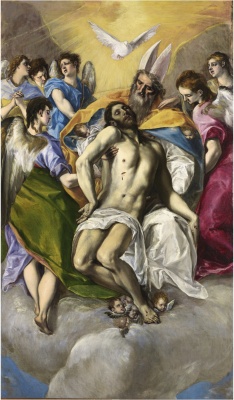Descripción de la Exposición
The Parc Saint Léger is pleased to present the first solo exhibition in a French institution of work by Melanie Smith, a UK-born artist who has lived primarily in Mexico City since the 1990s. She could be considered a surveyor of territories or even an archaeologist of the current moment. Her projects always engage with a specific place, usually in Latin America, using a multitude of media such as film, photography and installations. Her work also maintains a strong relationship with painting, a practice that provides insight into the way she views the issues on her mind. Digging up the present brings together both previously unshown and older pieces that, as an ensemble, interrogate the meaning and methodology of an archaeology of the present, and, by extension, the significance of these objects and the way we see them.
Smith conceives her production as a grand palimpsest constantly renewed by her experiences – of the past, of course, but also the present and perhaps the future. She made a site-specific installation for the Parc Saint Léger’s central space deploying the conventions of a museum lab. This installation presents an inventory of finds made during an archaeological excavation, an improbable collection of objects inspired by articles in the collection of the Bibracte archaeological museum but in fact made and assembled by Mexican craftsmen and herself. Fragments play the main role in this work, which interrogates the material reality of what it shows us. Her objects seem more like discarded scraps, with no particular identity or specific origin. They are presented as testament to a line of descent, the results of a process of transmission and transformation, products of a contradictory inheritance. But while fragments are characteristic of all of Smith’s work, artifice is no less important. The latter’s function is to render visible a process, framework or mise-en-scène, and the way these procedures incite or filter our perception.
For Bulto (2011), “package”, Smith reproduced the shape of an archaeological artefact discovered in Peru, a funerary bundle containing the mummified remains of a human corpse. Her version, wrapped in bright red plastic, is an unabashedly contemporary creation. The videos show this bizarre, inexplicable object perpetually moving in all sorts of vehicles and contexts. Here, too, Smith privileges a fragmentary approach to an environment that she studies while deliberately giving free rein to the indeterminate and the unexplained.
In the same vein, Smith’s film Maria Elena (2018) is a narrative about modernity highlighting the scars left behind by imperial and economic colonialism. Maria Elena is a mining town located in the Atacama desert in northern Chile. The settlement was founded by the Guggenheim family in the 1920s to house workers in its saltpetre mine, a major source of the nitrates used for making fertilizer and gunpowder. While Smith bears witness to this colonial history and the obsolescence that has overtaken industrial modernism, her treatment of the subject is anything but documentary. On the contrary, this montage is somewhat disorienting. The narrative unfolds through fragmented and relatively heteroclite images. The film’s subject is the permanent environmental destruction caused by the industrial extraction of natural resources, but it proceeds through a meditative contemplation of the landscape and its wounds in the same abstract fashion as the series of Smith’s paintings paired with the film. Once again this artist is asking us not so much to understand an issue as to engage with different frameworks of representation and perception.
Catherine Pavlovic

Exposición. 18 feb de 2025 - 15 jun de 2025 / Museo Nacional del Prado / Madrid, España

Formación. 01 oct de 2024 - 04 abr de 2025 / PHotoEspaña / Madrid, España